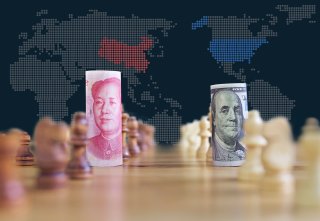The Self-Reinforcing Logic of U.S.-Sino Competition
A long-term U.S-China strategy requires guardrails, preventing competition from spiraling into collision.
Despite the recent resumption of high-level contact between Beijing and Washington, including face-to-face discussions between Yi and Sullivan in Vienna on May 10–11, Beijing’s perspective remains unchanged as to who is to blame for the “downward spiral” of bilateral relations.
“The United States,” as a Xinhua commentary on the Wang-Sullivan talks stated, “claims that it is not seeking to decouple from China and has no intention of obstructing China's development” but simultaneously “squeezes” China by “imposing many rounds of chip bans on Chinese firms under the pretext of national security” and “rushing to encircle China in the Asia-Pacific by mustering such Cold-War style groupings as the AUKUS and the Quad alliances.” Ultimately, the commentary concludes, this is driven by the belief of U.S. decisionmakers that “China must be brought down in order to keep America ahead.”
The Messy World of Strategic Competition
Both Washington and Beijing, then, are firmly set on trajectories that lock in rather than ameliorate bilateral tension and competition. This poses challenges and risks for both country’s domestic and foreign policies.
In Washington, competing with China has become a partisan political sport. Amidst tense administration negotiations with Republicans to raise the $31.4 trillion debt ceiling, Secretary of State Antony Blinken, Secretary of Defense Lloyd Austin, and Secretary of Commerce Gina Raimondo all fronted the Senate Appropriations Committee to support the president’s FY2024 budget request. Each argued the case that it was vital for the United States to “out compete” China. The implication, as Democratic Chair of the Appropriations Committee Senator Patty Murray made clear, is that “China isn’t debating whether to pay its debts, or wreck its economy. China isn’t debating whether to invest in its future, or cut and cap the investments that keep it competitive.” While this may be a classic example of wedge politics to paint Republicans as hamstringing U.S. efforts to out-compete China, it remains to be seen whether it produces better policy outcomes.
Xi Jinping, meanwhile, continues to consolidate his revision of the Dengist paradigm of the post-Mao era by privileging security over the economy. This is apparent in China’s recent “counter-espionage” crackdown which has targeted a range of foreign companies and individuals for alleged “leaking” of information related to “national security or interests” to foreign governments or entities. This came even as Premier Li Qiang attempted to reassure foreign companies and investors that Beijing was committed to building a “first class business environment.” However, the fact that the “counter-espionage” crackdown has been tasked to Ministry of State Security head Chen Yixin leaves little doubt that this constitutes a top priority for China’s leader.
In the realm of foreign policy, too, the Sino-American fracture continues apace. At the G7 summit in Hiroshima, Biden succeeded in forging a common, in-principle aspiration amongst the grouping to ensure “economic resilience” through “de-risking and diversifying” as a means of resisting “economic coercion” by Beijing. Meanwhile, Xi’s hosting of the first China-Central Asia summit in Xi’an sought to achieve several objectives that can be seen as necessary to girding China further for competition with the United States: to kick-start the BRI after Covid-19 slowdown; to cement further economic and strategic partnerships with the Central Asian states; and to further embellish China’s posturing as an alternative source of global leadership.
The self-reinforcing logic of great power competition is one of the closest things to an empirical law in international politics, and the increasing divide between China and the United States should not come as a surprise. But the apparent embedding of such competition raises the stakes not only for Beijing and Washington themselves but also for other key actors in the Indo-Pacific—many of whom have deep strategic ties with the United States and economic interdependencies with China.
It is likely that at some stage both Beijing and Washington will have an incentive to establish some guardrails in the relationship: after all, a collision course is costly and difficult to sustain for any length of time. Yet those tend to entail trade-offs and compacts, which tend to have more fundamental impacts on smaller states. Under those circumstances, it is vital that all players in the messy strategic landscape plan for unexpected outcomes, and simultaneously seek to identify what the contours of Indo-Pacific strategic stability might look like.
Dr. Michael Clarke and Dr. Matthew Sussex are Senior Fellows at the Centre for Defence Research at Australian Defence College.
Image: Shutterstock

